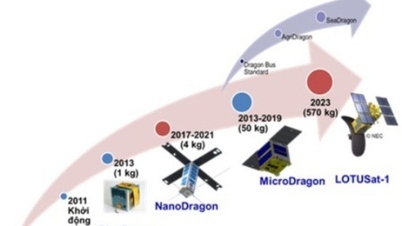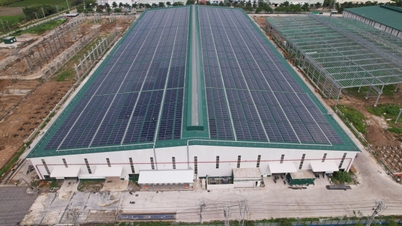
The Northern Hemisphere absorbs more energy, and the Earth will have to readjust its entire climate system, from monsoons and rainfall to the distribution of heat across the oceans. - Photo: Francesco Ungaro via Pexels
For many years, scientists have observed a strange phenomenon: the two halves of the Earth reflect almost the same amount of sunlight back into space.
This balance is considered surprising, because the Northern Hemisphere has more land, cities, and industrial smog, factors that typically cause the Earth's surface to reflect more light. Meanwhile, much of the Southern Hemisphere is ocean, which is darker and absorbs more energy.
The Northern Hemisphere is receiving more sunlight.
However, the latest satellite data from NASA shows that this symmetry is gradually disappearing. The Northern Hemisphere is becoming "darker" and absorbing more solar energy than the rest of the planet.
In a study published in the journal Proceedings of the National Academy of Sciences (PNAS), Dr. Norman Loeb's team at NASA's Langley Research Center analyzed data collected over two decades from the CERES satellite mission, a system that measures the amount of radiation that Earth absorbs and reflects.
The results show that the energy absorbed between the two hemispheres is no longer balanced. The Northern Hemisphere is receiving more sunlight, while the Southern Hemisphere remains stable. This difference, though small, could have a significant impact, altering ocean currents, rainfall, and even the global climate system in the future.
According to scientists, Earth always tries to maintain balance by absorbing energy from the Sun and radiating it back into space as thermal radiation. When this process is disrupted, the planet adjusts itself through natural mechanisms such as changes in cloud cover, reflection of ice and snow, or surface temperature. But this time, it seems those mechanisms were no longer strong enough to maintain balance.
Experts believe there are three main reasons for this imbalance. First, the ice and snow in the polar regions and northern mountain ranges are melting rapidly, exposing darker land and oceans—surfaces that absorb heat far more effectively than white snow.
In addition, industrial smog and emissions in many developed areas have decreased significantly over the past two decades thanks to environmental policies. While this sounds positive, it actually results in less light-reflecting particulate matter in the air, causing the Earth to absorb more energy.
Another factor is that warmer air can hold more water vapor, and water vapor absorbs sunlight instead of reflecting it. As the climate in the Northern Hemisphere warms more rapidly, the amount of water vapor in the atmosphere also increases, making the region appear "darker" to satellites.
Global climate impact warning
One surprising finding in the study was that global cloud cover has remained virtually unchanged for over twenty years. If the climate system had a self-balancing mechanism, scientists would expect the Northern Hemisphere to see more clouds to reflect off excess sunlight. But that hasn't happened.
Dr. Norman Loeb stated that the cloud factor is what puzzles him most. He questioned whether Earth's climate is inherently symmetrical between the two hemispheres, or whether current changes are disrupting that pattern. Many climate models are still not detailed enough to fully explain the complex interactions between clouds, water vapor, and atmospheric aerosols.
Zhanqing Li, a climate scientist at the University of Maryland, argues that understanding how clouds and dust particles interact remains one of the biggest challenges in climate science. Clouds play a crucial role in regulating the amount of energy the Earth receives and emits, and even a small change in this system can have far-reaching impacts on the global climate.
Although the energy gap between the two hemispheres is currently small, experts warn it could increase rapidly in the coming decades. Once the imbalance becomes apparent, Earth will have to readjust its entire climate system, from monsoons and rainfall to the distribution of heat across the oceans.
According to Dr. Loeb, this research is just the beginning of a better understanding of how the Earth absorbs and reflects energy. He hopes that upcoming next-generation climate models will help verify the results and more accurately predict future changes.
"This imbalance is not just a number; it shows that our planet is changing faster than many people realize," he said.
Source: https://tuoitre.vn/nasa-phat-hien-su-lech-pha-nguy-hiem-giua-hai-ban-cau-cua-trai-dat-20251028094530675.htm
















































































































Comment (0)